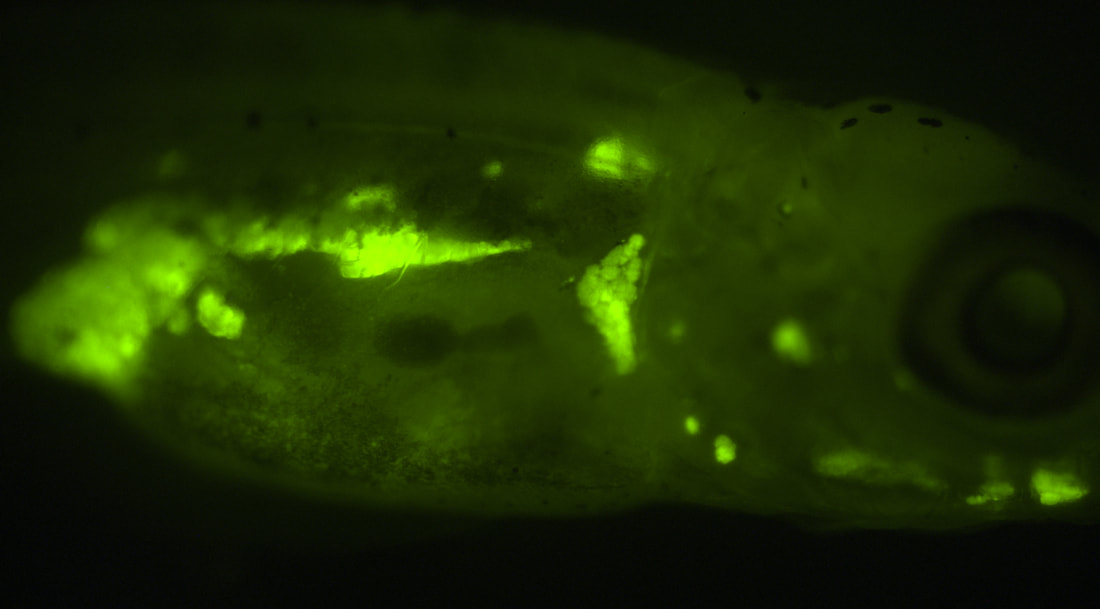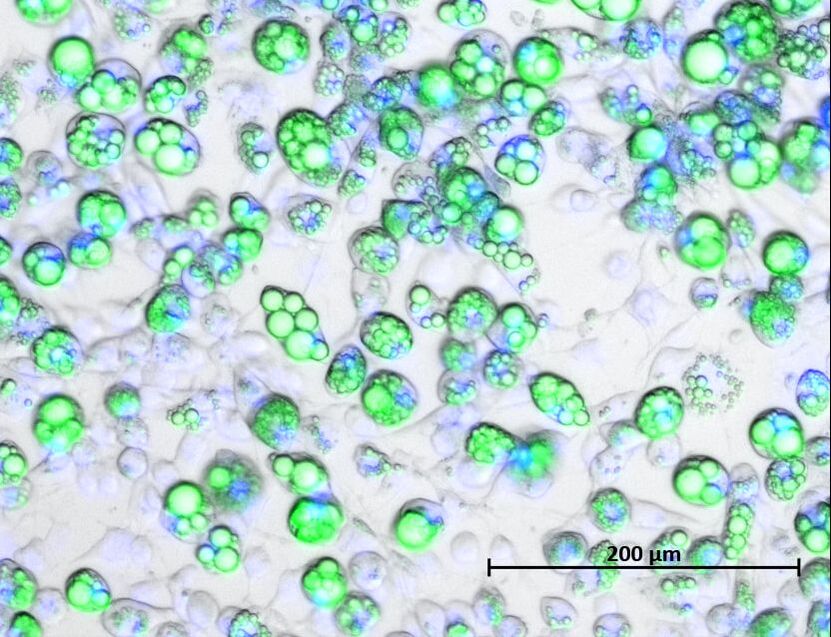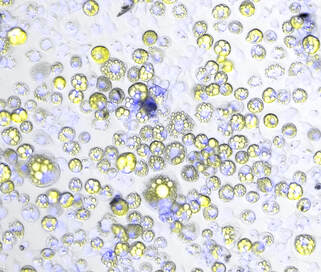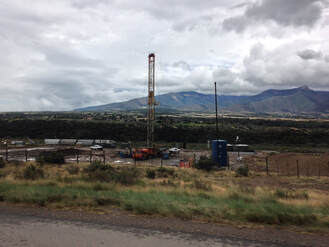Current Grant-funded Projects
|
Lateral view of a zebrafish developmentally-exposed to nonylphenol ethoxylate and aged to 30 days. Nile Red stain fluorescently labels the fat cells throughout the fish.
|
|
Metabolic Disruption Potential of Organic and Inorganic Contaminant Mixtures
Currently funded via an NIEHS P30 Center Pilot award through the Center for Urban Responses to Environmental Stressors. This project aims to explore the potential hormone receptor activation/inhibition and metabolic disruption of organic and inorganic pollutant mixtures relevant to Michigan. Our goals are to:
1) Characterize concentrations of inorganic pollutants in household dust and examine associations with organic pollutants/bioactivities. 2) Assess adipocyte development and receptor disruption following exposure to select organic/inorganic contaminants and mixtures. 3) Assess adipocyte/adipose tissue development following exposure to select organic/inorganic contaminants and mixtures in zebrafish. You can listen to a webinar I gave on related mixture research here. |
Visualization of differentiated 3T3-L1 pre-adipocytes. Green = Nile Red lipid stain; blue = Hoechst DNA stain (cell number).
|
|
Interrogation of Existing Toxicological Mixture Models through Metabolic Disruption Contaminant Mixture Testing
Currently funded via an EPA STAR award to rigorously assess available toxicological models (e.g., concentration addition, independent action) through controlled testing of mixtures with increasing complexity. We'll test using a mixture of metabolic disrupting chemicals working through 1) a single, shared mechanism, 2) single mechanisms across six metabolic pathways, and 3) six overlapping mechanistic pathways, with chemicals activating multiple rather than just one.
We'll pursue this and actual environmental sample testing through use of human mesenchymal stem cells and the zebrafish model. You can listen to a webinar I gave on related mixture research here. |
Endocrine Disrupting Toxicity Associated with
|
|
We are currently funded through a pilot grant through the New York University (NYU) Collaborative Center in Children's Environmental Health Research & Translation.
We will be recruiting a small cohort of Detroit-area youths and measuring diverse semi-volatile contaminant exposures associated with playing on artificial turf fields versus natural grass fields. We will also profile the endocrine toxicity of these mixtures as well as extracts derived from diverse artificial turf products, filler materials, and padding samples. We're interested in better characterization of the endocrine disruption potential and toxicity associated with artificial turf materials. We are also interested in better understanding the chemical mixture exposures potentially experienced by the people playing on and/or using this material in their daily lives. |
|
Artificial turf is increasingly used in both sports and residential environments, yet the chemicals used to produce this product and the potential exposures to humans using these surfaces has not been well-studied.
|
|
Liquid crystal monomers (LCMs) are chemicals used in liquid crystal device (LCD) screens and have been shown to leach out and end up in both humans and the environment (sediment, household dust, etc.).
|
Characterizing Liquid Crystal Monomer ToxicityWe are currently funded through a Wayne State One Health Initiative pilot grant to better understand environmental exposures and toxicity of these emerging contaminants.
Started as a rotation project for Samantha Heldman, we have been working to characterize the endocrine toxicity and metabolic disruption potential of chemicals used in the LCD screens of your favorite devices. Samantha's first project profiled endocrine activity across diverse nuclear hormone receptors and examined the ability to promote fat cell development in a pre-adipocyte cell model. Our future projects intend to dig into mechanisms, metabolism of these chemicals, effects in a zebrafish model, and trying to better understand human exposure to these chemicals in the US. |
Other Projects/Broad Research Interests
|
|
A natural gas well in Garfield County, Colorado, an extremely dense unconventional oil/natural gas production region.
|
|






